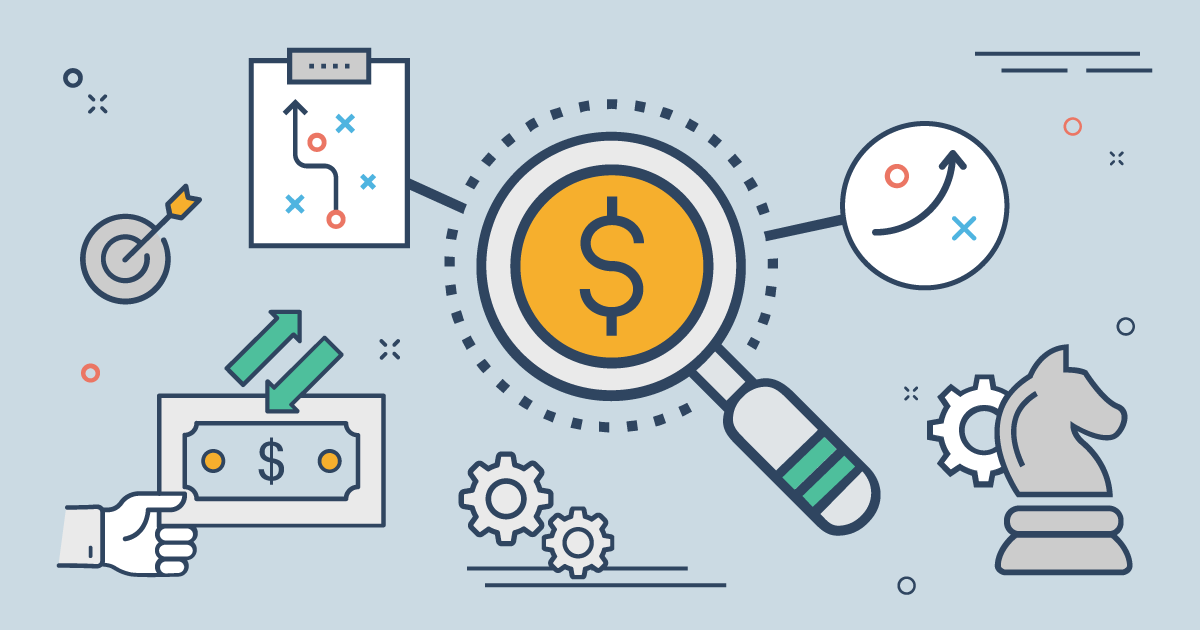
Is subscription pricing fair to those involved? Who typically wins and who typically loses in these schemes, the seller or the buyer?
Subscription is defined as:
"the action of making or agreeing to make an advance payment in order to receive or participate in something." It should also be added that subscriptions typically happen on a
recurring basis.
Modern subscription pricing models give discounts for longer commitments where paying and renewing per-month, for example, is more expensive than paying or renewing on an annual basis.
What is driving buyers (businesses as well as consumers!) to decide to pay for a subscription? Sometimes it's the only option available. Some of it can also be explained by FOMO (Fear of Missing Out). The opposite scenario, would be grandpa Murray's saying, "Tell me what you need and I'll tell you how you can get along without it."
Here is what is driving the move to subscriptions:
- Limited choice. This affects both seller and buyer. Barry Schwarz has been absorbed, but the result is sometimes perversion of the intent.
- Seller – Offer buyer fewer choices to make the sale faster, train sales people on “value” of having all options available
- Buyer – Less to think about
- Don’t need to worry about a varying usage pattern. Big decisions up front (sports or not in package), but then it doesn’t matter if there is a sleep over. At a business level, I may not be using a specific feature now, but it’s expensive to add.
- Aspirational. If I pay for the gym I’m more likely to guilt myself into using it. If I buy a media subscription, I may come back to read it later, and I know it’s much more expensive to buy single copies.
- FOMO. Perhaps. Water cooler talk about a new show?
We further dissect the elements of subscriptions:
Ease. The ease or simplicity of subscription pricing can be quite disturbing: in a 'set it and forget it' fashion, consumers basically sign up for services that they may never use and grant an annuity payment to the seller if their subscriptions go unmanaged. It's interesting to wonder how many subscriptions people have versus those that are actually used. The difference represents waste and likely profit for the seller.
Popularity. Subscriptions likely take up an increasingly large mix of consumers' market baskets. This perhaps relates to the previous concept and the perception of abundance: and it is generational to some extent. Taking care of the pennies and the dollars will take care of themselves has been replaced by “it’s only $25 per month” and buyers forget how much all the $25 adds up.
Partiality. Rather than paying for the entire value of the item up front, in subscription pricing, it is like leasing or renting: it creates a price that may seem more affordable or attractive to the consumer and makes the buying decision easier.
Waste on the Consumer End. There can be waste for consumers of subscriptions: we sign up and don't use them. Magazines arrive, for example, accumulate and don't get consumed. Subscriptions if used well directly align supply and demand but when the buyer does not make full use of the subscription and its benefits, there is misalignment and therefore waste; the system can be inefficient.
Waste on the Seller End. There are also examples of waste where the company gets the model wrong and loses: a recent example of this was MoviePass who offered for $9.99 nearly unlimited access to movie theaters. The company quite famously experienced major challenges with this model and folded badly. Fast followers and larger, more established organizations like AMC quickly swooped in on the opportunity and figured out a set of economics that could more sustainably provide a subscription service to this market.
Returns. When there is waste it may be the duty of the seller to both detect and re-adjust the subscription plan to better fit the usage pattern of the user. An example of this is cell phone carriers who are willing to recommend a better plan based on the observed usage of the service by the user. Consumers will expect and want more of this kind of governance and value.
Options and Complexity. Another common example of waste in subscription models and a "good thing" for sellers are gym memberships: consumers keep paying regardless of use. Gyms would perhaps be delighted if their members never showed up as long as the revenue stream kept flowing.
Option Time Frames. Options can be offered in both "pre-facto" and "post-facto" contexts. For example, in the pre-facto sense, consumers can choose whether or not too add cheese to their burger. This is a competitive differentiator for some: have it your way vs. limiting options by policy because the seller knows what their consumers like. An example of a post-facto (after the purchase) option would be returning the burger for a full refund if unsatisfied. A better example, related to subscription, is a refund for unused services or carry forward minutes, as it were. Carry-forward is not necessarily in the buyer’s interest if they aren’t going to binge to catch up. This also happens in employment scenarios when employees accumulate "sick days" that expire at the end of the year. Have an inexpensive service where what the consumer pays seems worth the price, but it's messed up if it's only used as a small fraction of the number of available annual uses.
Increasing Complexity. It is likely that pricing models will only increase in terms of their complexity over time and this will lead to increased confusion and dissatisfaction of consumers. End-User License Agreements (EULAs) of software, for example, are notorious for their complexity and consumers are known to just skip over them rather than understanding the language and implications of their engagement with the offering. Consumers are likely to get tired and "don't have time to do a spreadsheet every time they are going to buy something." There used to be a place for consultants between business buyers and vendors – interpreting what the prospect really needs. Computers are driving this innovation and ability to deliver more complex mechanisms successfully.
Overwhelm. In Barry Schwartz's The Paradox of Choice it is argued persuasively that not everyone needs or wants more choice and at some point the buyer becomes overwhelmed with options and relies on gut, emotion, bias or instinct to decide. From an engineering and innovation perspective more options, bells and whistles are valuable but it is the job of the marketer or product manger to bundle and package only these innovations into bite size chunks that the end users will actually use, consume and from which they will, at scale, actually receive value and benefit.
Base Plus and Hybrid Models. Some new pricing models start with the base service and then offer add-ons or subscriptions on top of the base capability. These can be thought of as hybrid models with fixed and variable expenses. As if lots of features and pricing models were not enough to confuse the consumers, "modes" and options of features (like colors) add yet another layer of complexity to considerr.
Bundling, Tailoring and Customization. Rather than one-size-fits-all strategies, companies are starting to play with services that better fit the consumer. Although a side effect is too much choice for the consumer, one benefit is (if the choices can be simplified) that the services and prices can be directly tailored and fit to the needs of the buyer. There are opportunities to tailor based on buyer psychographics that aren’t being fully utilized, for example, as well.
Returns and Less than Full Utilization. Return policies in some way are linked into pricing benefits, perceived value and purchasing decisions. For example, some snow chains can be returned years later if not used for full money back. Organizations like Costco and Nordstrom are known for great return policies. There could be scenarios in subscription pricing models where the unused portion of the service could be returned for all or a portion of the money back but these seem rare today. Said differently, rather than consumers having to 'eat' the difference, the seller could detect unused capacity and give the consumer some money back, making the exchange more efficient and less one-sided. Another example of seller graciousness and service is Les Schwab changing unused snow chains for those fitting a new vehicle.
Lack of Ownership. Traditional, basic pricing models of music, for example, where an entire CD
is purchased and owned may also demonstrate waste but the goods at least become an asset to and property of the buyer. Possession and ownership also provides the ability to transfer, trade or sell the item post-facto and buyers can recuperate some of the cost. Leases, subscriptions and downloadable music do not typically exhibit an ability to transfer. Perhaps an album as a coherent offering from an artist whereas streaming services muddy the waters.
Delivery Method. Many new delivery models are available today as well, which also play into consumer perception of value. For example, Amazon Prime's home delivery and one-day delivery are extremely convenient for users and create excitement. Similarly, Amazon now does delivery to vehicles, garages, and lockers. Innovation in delivery can be captured in pricing.
Customer Service and Trust. The quality of customer service and in some cases access to human representatives of the organization also plays into consumer thought on value and price. Painful customer service experiences, ridiculous hold times and no access to qualified and capable humans is largely dissatisfying for consumers, resulting in customer loss. What is driving consumers' perception of trust in providers? The relationship and perception of care and personalization is a big part of it. For example, Verizon and Pemco keep good records about customers so the relationship with the organization is maintained over time building trust. Some businesses calculate Customer Lifetime Value and tailor services based on the perceived (most likely remaining) value of the customer. There are of course examples where the provider bends over backwards and goes above and beyond what is reasonable to delight a customer or prove a point in the market. The book Snow Crash by Neal Stephenson tells fictitiously of a Pizza Company CEO who travels to the dissatisfied customer to apologize in person for a poor delivery, then harms the delivery person.
Justice and Equity. When both parties feel like they have compromised an equitable amount or given up something of equal value during the exchange, interests are aligned and growth can flourish.
Geography, Regulatory Context, Risk-Transfer and Taxes. Sales taxes and their avoidance also plays into product pricing strategies and distribution methods. In the Supreme Court case of South Dakota vs. Wayfair, it was ruled that, "states can mandate that businesses without a physical presence in a state with more than 200 transactions or $100,000 in-state sales collect and remit sales taxes on transactions in the state."
Criticality for Businesses. Not only are companies thinking about how to avoid tax expenses, they're also thinking about how to best finance their operations. And what better way to get cash in hand to fund future activities than to get recurring payments from consumers rolling in? This is one of the key reasons for subscription pricing, and also results in many of the problems and examples of misalignment.
Buyer Beware. From an early age, as consumers, we are hopefully trained to question what is being sold and marketed to us both in terms of value, price and supplier quality. As consumers we are raised in a culture of skepticism and a lack of trust for sellers and sales people, for example. Other cliches abound such as The Customer Is Always Right. And in practice that principal is not regularly honored.
To Summarize a Few Points:




